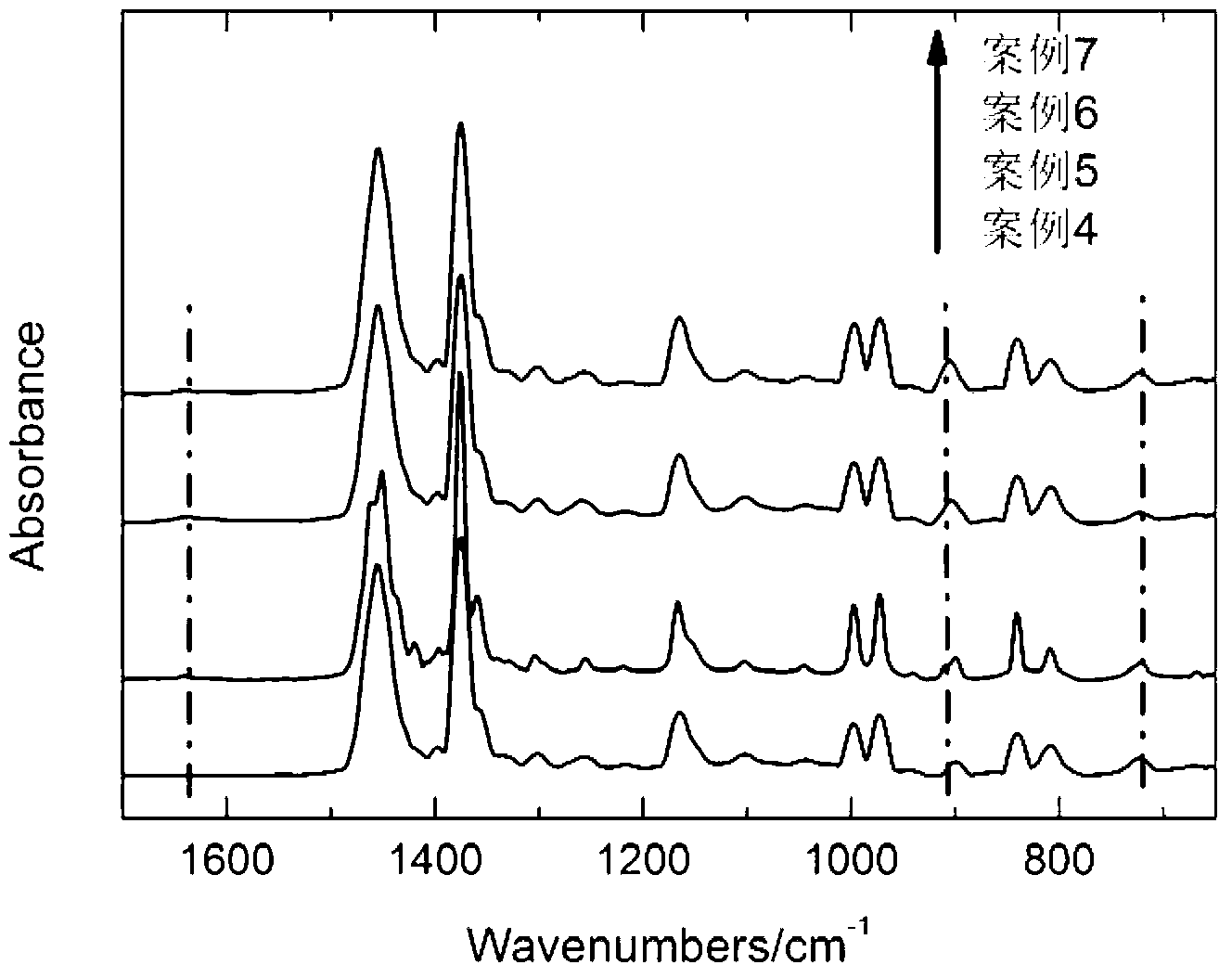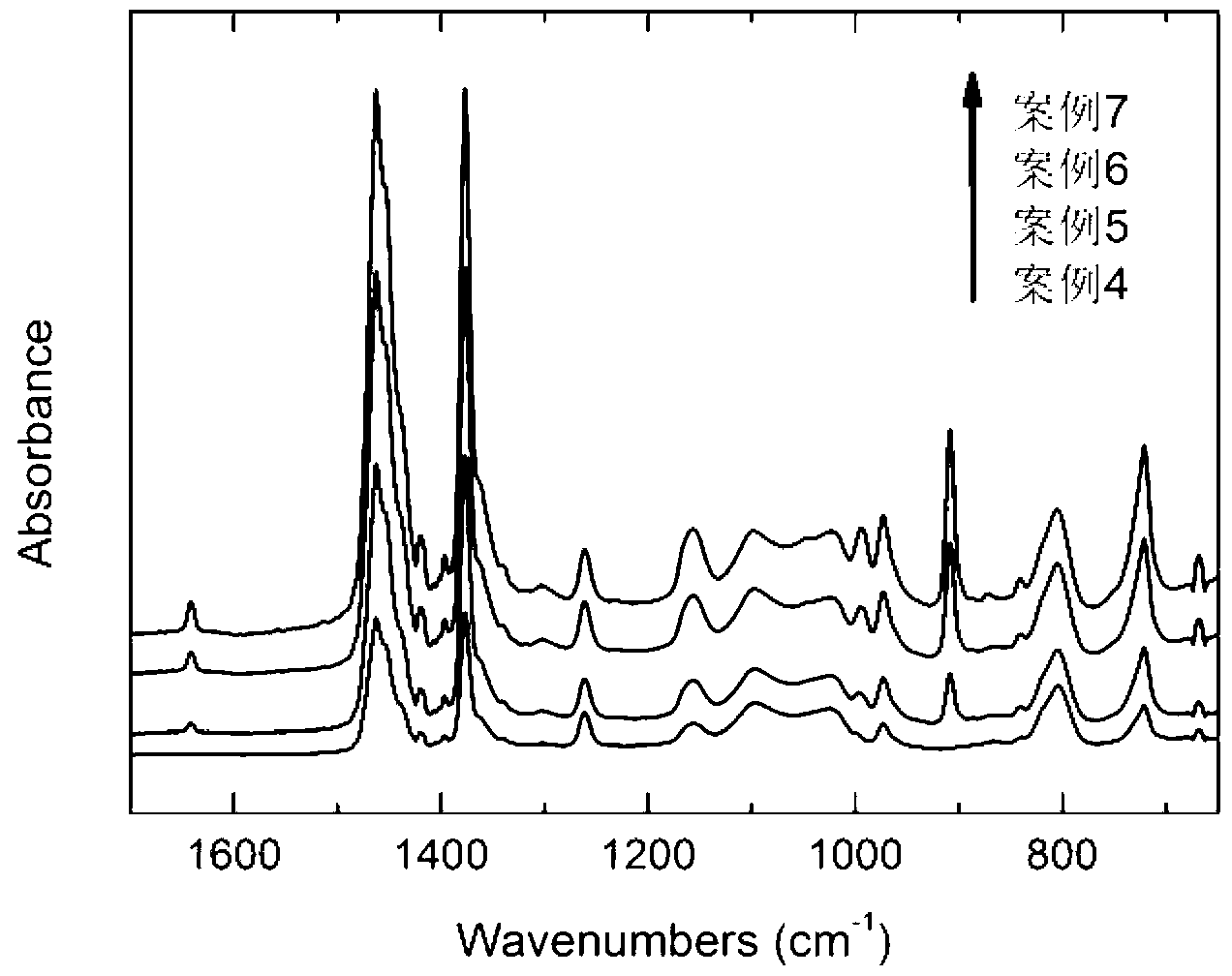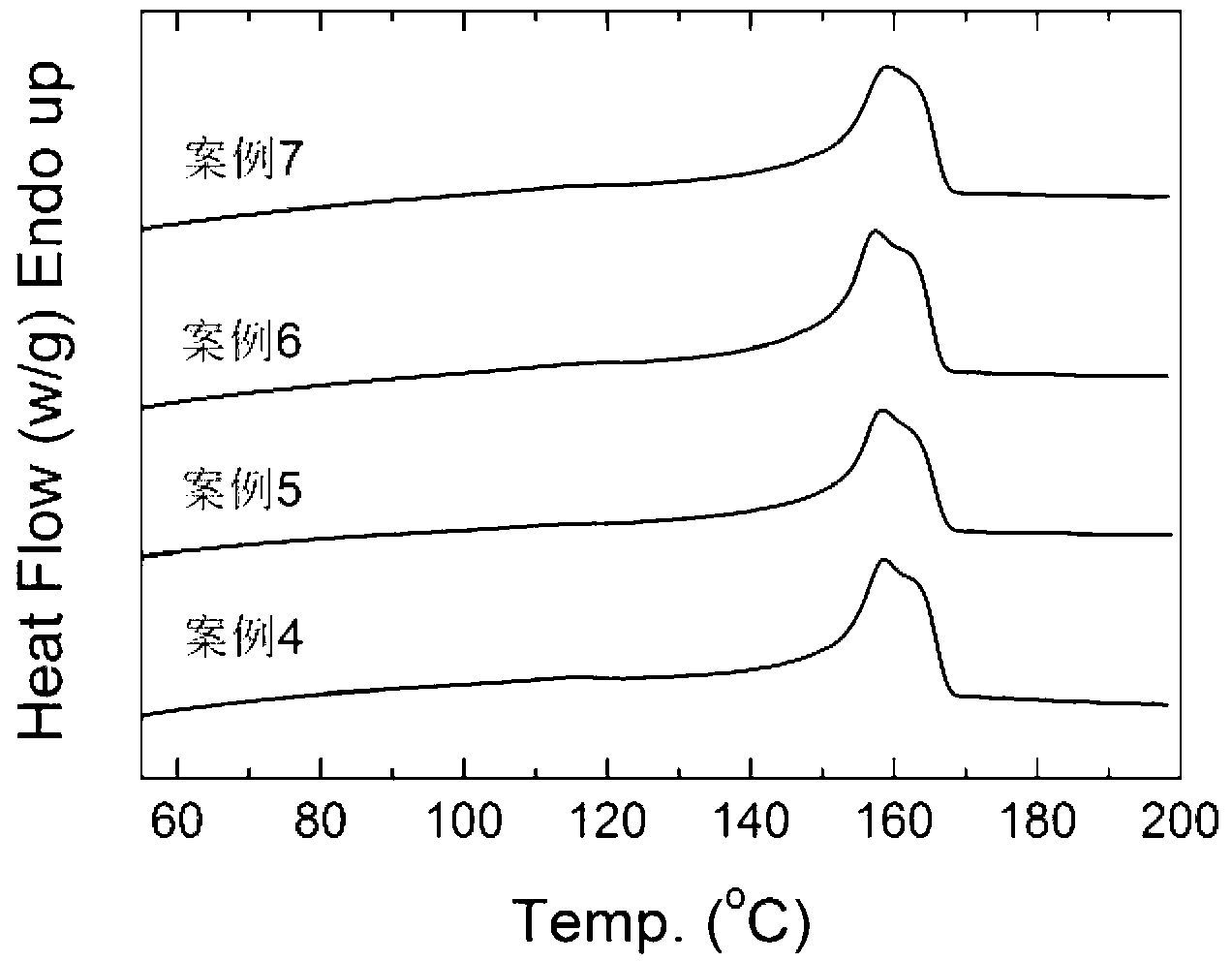Propylene multiphase copolymerization system, polymerization process and polypropylene kettle internal alloy
A technology of alloys in kettles and polypropylene, which is applied in the field of alloys in polypropylene kettles, can solve problems such as reducing the toughening effect, and achieve the effects of low cost, easy implementation, and obvious toughening effects
- Summary
- Abstract
- Description
- Claims
- Application Information
AI Technical Summary
Problems solved by technology
Method used
Image
Examples
Embodiment 1
[0051] (1), propylene homopolymerization
[0052] In a 500ml dry autoclave, first add 50ml of dry n-hexane, then add 1ml of triethylaluminum with a concentration of 1.8mol / L, 19.6mg of the Ziegler-Natta catalyst prepared above, and keep the aluminum-titanium ratio: Al: Ti=100:1 (molar ratio), then feed propylene gas, polymerize at 60°C under 0.4MPa pressure for 15 minutes to obtain polypropylene particles, and proceed directly to the next step of reaction.
[0053] (2), ethylene-propylene copolymerization
[0054] The propylene gas in the above step (1) is vented, and then the gas molar ratio is 1:1 ethylene-propylene mixed gas, and when the polymerization system pressure is 1atm, add 1ml of 1,9-decadiene mono Carry out ethylene-propylene copolymerization in a hexane solvent system, the polymerization temperature is controlled at 60°C, the pressure is 0.4MPa, and the copolymerization reaction takes 5 minutes. After the polymerization was completed, the gas pressure in the au...
Embodiment 2
[0056] (1), propylene homopolymerization
[0057] In a 500ml dry autoclave, first add 50ml of dry n-hexane, then add 1ml of triethylaluminum with a concentration of 1.8mol / L, 24.0mg of the Ziegler-Natta catalyst prepared above, and keep the aluminum-titanium ratio: Al: Ti = about 100:1 (molar ratio), then feed propylene gas, polymerize at 60°C and 0.4MPa for 30 minutes to obtain polypropylene particles, and proceed to the next step of reaction directly.
[0058] (2), ethylene-propylene copolymerization
[0059] The propylene gas in the above step (1) is vented, and then the gas molar ratio is 1:1 ethylene-propylene mixed gas, and when the system pressure is 1atm, quickly inject 3ml of 1,9-decadiene The monomers are directly copolymerized with ethylene-propylene and diene monomers in a hexane solvent system, the polymerization temperature is controlled at 60° C., the pressure is 0.4 MPa, and the copolymerization reaction is carried out for 5 minutes. After the polymerization ...
Embodiment 3
[0061] (1), propylene homopolymerization
[0062] In a 500ml dry autoclave, first add 50ml of dry n-hexane, then add 1.5ml of triethylaluminum with a concentration of 1.8mol / L, 27.1mg of the Ziegler-Natta catalyst prepared above, and keep the aluminum-titanium ratio: Al : Ti = about 100:1 (molar ratio), then feed propylene gas, polymerize at 60°C and 0.4MPa for 30min to obtain polypropylene particles.
[0063] (2), ethylene-propylene copolymerization
[0064] Vent the propylene gas in the above step (1), and use a vacuum pump to remove the hexane solvent in the polymerization system. The vacuum degree is about 5 mmHg, and the removal time is about 5 minutes. After removing the hexane solvent, the ethylene-propylene mixed gas with a gas molar ratio of 1:1 was quickly passed into the kettle. When the pressure inside the reactor was 1 atm, 1 ml of 1,9-decadiene monomer was injected rapidly, and the copolymerization reaction of ethylene-propylene and diene monomer in the gas pha...
PUM
 Login to View More
Login to View More Abstract
Description
Claims
Application Information
 Login to View More
Login to View More - R&D
- Intellectual Property
- Life Sciences
- Materials
- Tech Scout
- Unparalleled Data Quality
- Higher Quality Content
- 60% Fewer Hallucinations
Browse by: Latest US Patents, China's latest patents, Technical Efficacy Thesaurus, Application Domain, Technology Topic, Popular Technical Reports.
© 2025 PatSnap. All rights reserved.Legal|Privacy policy|Modern Slavery Act Transparency Statement|Sitemap|About US| Contact US: help@patsnap.com



